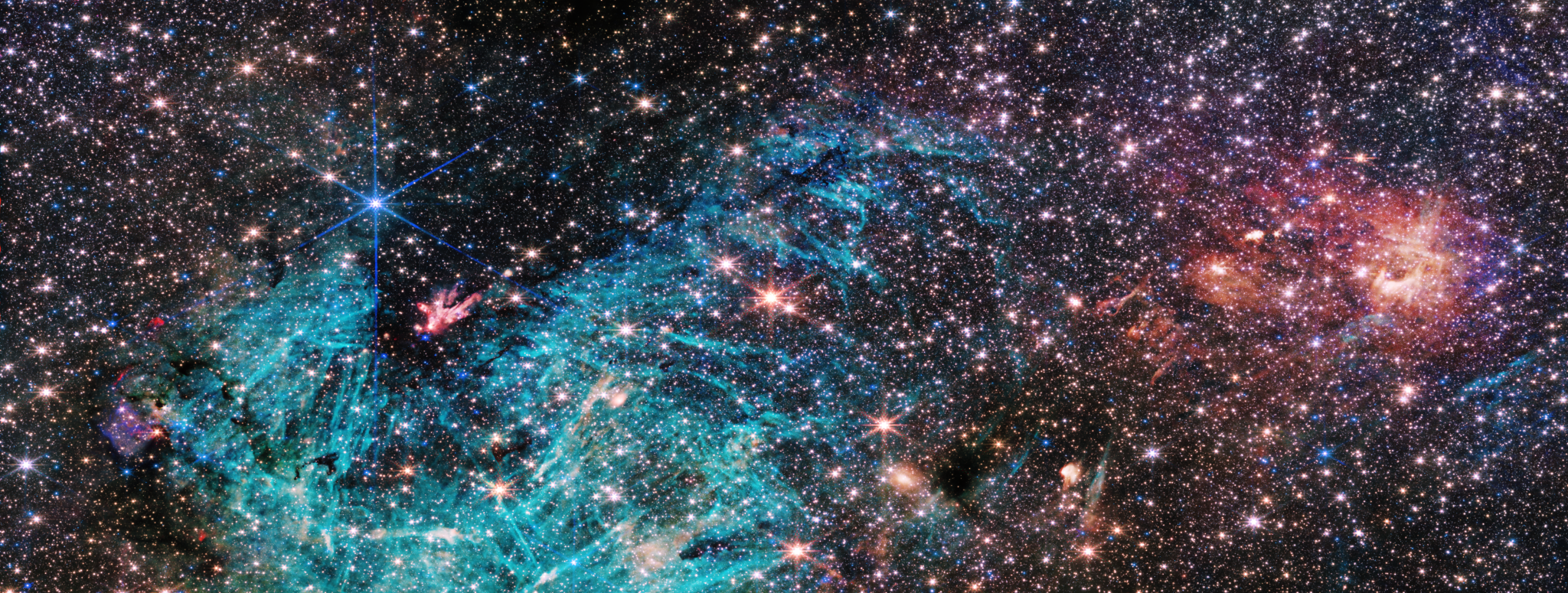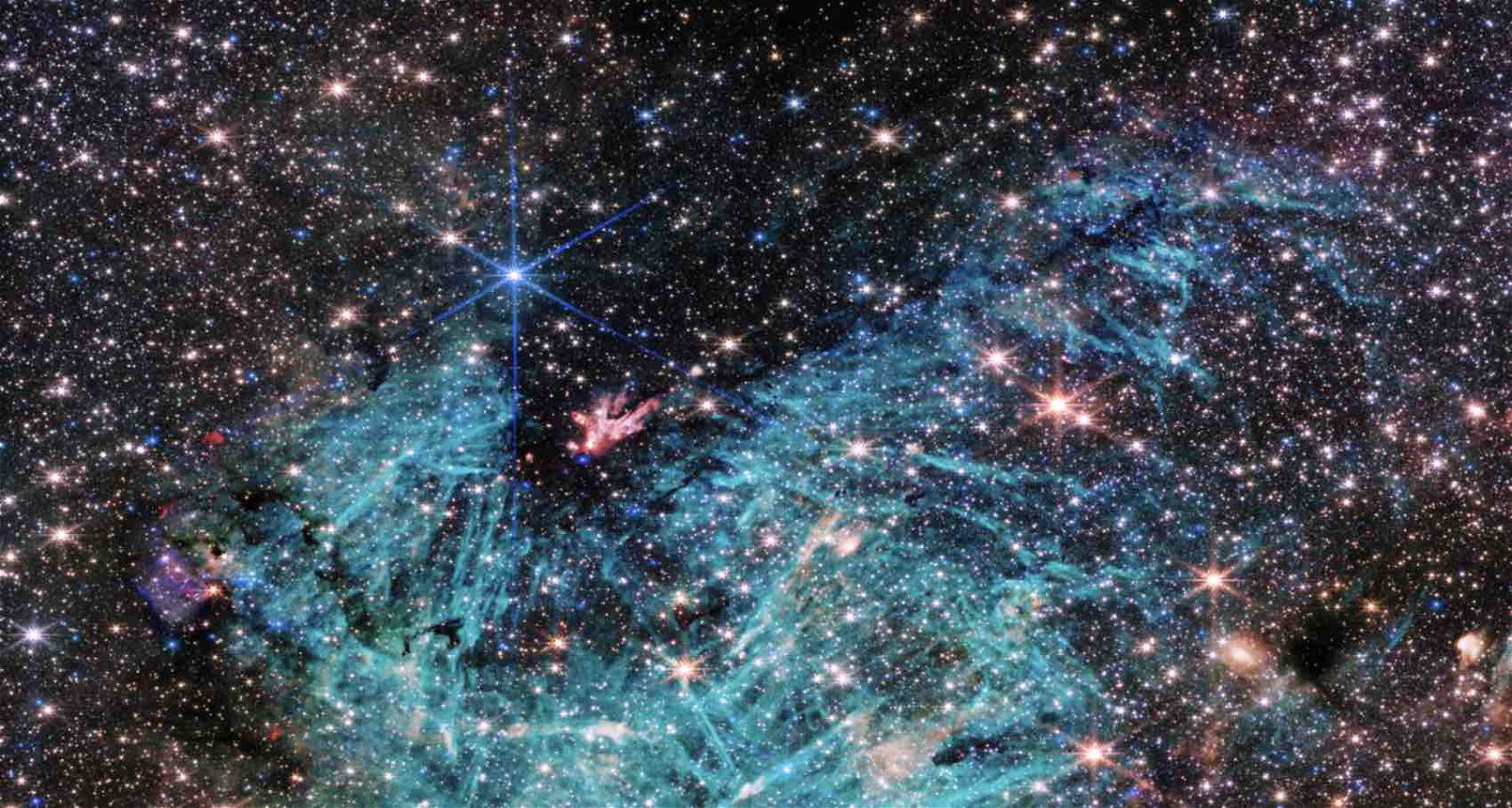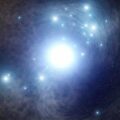New imagery captured by NASA’s James Webb Space Telescope has revealed the heart of the Milky Way in unprecedented detail, once again offering astronomers a clearer view of the cosmos than ever before.
However, the newest image produced by NASA’s premier space science observatory also showcases features that NASA says astronomers “have yet to explain.”
The images offer a view of Sagittarius C (Sgr C), a star-forming region approximately 300 light-years from Sagittarius A*, a supermassive black hole at the center of our galaxy.
Located just 25,000 light-years away from Earth, the center of the Milky Way is close enough that Webb can focus its powerful eye on individual stars, which grants scientists a unique opportunity to study the ways they are formed, as well as how stellar formative processes might differ between the galactic center and its outermost regions.
James Webb Space Telescope Peers Into the Heart of the Milky Way
Samuel Crowe, an undergraduate student at the University of Virginia in Charlottesville who led the recent investigations of an observation team that studied the imagery, said that before now, there had never been infrared data on Sgr C comparable to what Webb has obtained.
“We are seeing lots of features here for the first time,” Crowe said in a NASA release, adding that the Webb telescope “reveals an incredible amount of detail, allowing us to study star formation in this sort of environment in a way that wasn’t possible previously.”
The imagery, featuring an estimated 500,000 stars, depicts one of the most extreme regions in the entire Milky Way galaxy, granting the team a unique opportunity to test some of the current leading theories of star formation.
Alongside the hundreds of thousands of stars the Webb telescope image showcases, a cluster of formational stars known as protostars also produces a distinctive glow from the center of an area astronomers have identified as an infrared-dark cloud. First discovered in 1996, these are cool but dense regions within a massive molecular cloud that appear in silhouette, backlit by mid-infrared emissions emanating from the galactic plane.


Infrared-dark clouds remain a feature of the cosmos that astronomers hope to obtain more data. However, they are currently believed to represent some of the oldest stages in the formation of stars with high masses. Given their role in stellar formation, these curious cosmic clouds offer an important area of study for astronomers.
Within the infrared-dark cloud at the center of Sgr C, astronomers say a massive protostar exists that is estimated to be close to 30 times the mass of our own Sun. Although this region appears less densely packed with stars than other areas in the new image, it is actually the opposite: the light from stars located behind the cloud is blocked due to the cloud’s density.
With help from Webb’s Near-Infrared Camera, or NIRCam, emissions of ionized hydrogen, which are believed to be caused by photons that are coming from young massive stars, were also observed in the lower portions of the cloud.
Surprises and Stunning Imagery
Ultimately, the region depicted in the new Webb image has produced enough surprises that it warrants further investigations by astronomers like Crowe and the observation team, which will look at features like the unusual, needle-like structures that appear in ionized hydrogen that contribute the chaotic appearance of the heart of our galaxy.
“The galactic center is a crowded, tumultuous place,” says Rubén Fedriani, a co-investigator of the project based at Spain’s Instituto Astrofísica de Andalucía, who also describes the stormy and unstable clouds of magnetized gas which are giving rise to new stars, and which “then impact the surrounding gas with their outflowing winds, jets, and radiation.”
Crowe called Webb’s newest image “stunning,” adding that the data he and others will obtain from it is another of the telescope’s many incredible contributions to astronomy.
“Massive stars are factories that produce heavy elements in their nuclear cores,” Crowe added. “So understanding them better is like learning the origin story of much of the universe.”
Micah Hanks is the Editor-in-Chief and Co-Founder of The Debrief. He can be reached by email at micah@thedebrief.org. Follow his work at micahhanks.com and on Twitter: @MicahHanks.

